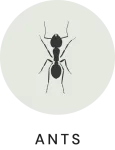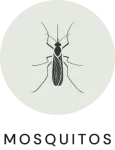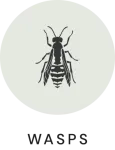We’re The Best With Bugs
Over 10,000+ 4.8 Stars Reviews
Discover the difference of our pest control services, providing high-end solutions and superior customer satisfaction.

1
Eave Sweep
2
Barrier Spray
Barrier Spray
We do a 6-foot power spray around the foundation of your home. We treat 3 feet up and 3 feet out with a water-resistant product to keep your home bug-free regardless of the weather!
3
Granules
Granules
We use a spreader to place a granular bait 10-15 feet around the home. This barrier acts like a moat to keep bugs from nesting near your home!
4
Mosquito Fog
Mosquito Fog
With our mosquito program, our service pros fog the entire property, leaving a thin mist of product on shrubs, foliage, and grass to reduce tick, flea, and mosquito activity! This way you can enjoy your yard!
5
Crack & Crevice
Crack & Crevice
We use a handheld pump to treat any cracks, crevices, & gaps around the foundation of the home with a dust which helps prevent bugs from nesting in the foundation and working their way inside.
6
Yard Inspection
Yard Inspection
Our Pest Experts thoroughly inspect the property for any signs of activity on your property. They also educate on any helpful tips and tricks for decreasing pest activity on your property!
7
Pest Experts
Pest Experts
All of our service pros are properly licensed, trained, & background checked in order to provide you with the best of the best!
Contact Us
Let RIDD Solve Your
Pest Problems



Enjoy Your Yard and Home Without Pests

Safe & Effective Pest Control by Professionals That Care
RIDD Pest Control believes that our service is the most important part of our business, and we take it seriously. Every one of our technicians regularly undergoes training to continue to hone and refine their skills, and likewise each has been chosen for their exceptional ability to offer a customer experience we are proud of.
Above All, We Care About Serving You
Get a free quote so we can help secure your home from any unwanted pests!
















